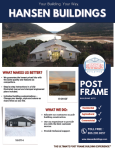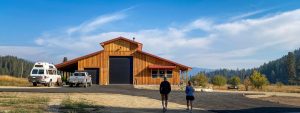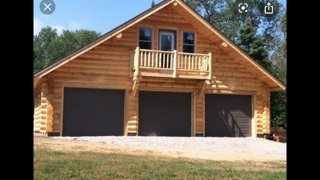Welcome to Ask the Pole Barn Guru – where you can ask questions about building topics, with answers posted on Mondays. With many questions to answer, please be patient to watch for yours to come up on a future Monday segment. If you want a quick answer, please be sure to answer with a “reply-able” email address.
Email all questions to: PoleBarnGuru@HansenPoleBuildings.com
DEAR POLE BARN GURU:I am looking for more information on roof trusses. I would like to know how double roof trusses at spacing of 8′ or more is as good as or better structurally than 4′ or 2′ spacing. The long spans between joists is something I have not seen before. I don’t need an answer immediately, I’m still planning my pole barn.
You’re web site is great, and has answered many of my questions. Keep up the good work.
Thank you. ONLY IN ORANGE
DEAR ONLY: Thank you for your question and for planning things in advance so your new building ends up being ideal for you. There are several facets in the answer to your question.
Looking at the trusses themselves – a single truss spaced every four feet and ½ of a pair of trusses spaced every eight feet are going to be carrying the exact same amount of load.
Now let’s imagine loading the roof beyond the actual design capacity (it does happen when the once in 100 year storm decides to visit). In a single truss system, when the weakest truss fails due to extreme loading – there is a pretty fair chance the rest of the roof is coming down along with it, as each successive single truss becomes overloaded due to the failure of the previous truss.
In a double truss system, each truss is securely attached to its partner. The probability of both of these trusses having the exact same weak point is infinitesimally small. In the event of the storm of the century, chances are very good the double truss system will still be standing, after the single truss system has failed.
With a true double truss system (where the trusses are attached directly face-to-face and not spaced apart by blocking), the truss pair is also twice as stiff against buckling in the weak direction as a single truss. This allows for a significant reduction in the amount of lateral bracing required for bottom chords and web members – more cost efficient and quicker to construct.
The real beauty of the double truss system is when the trusses can bear directly upon the columns – as opposed to a “truss carrier” (aka header). Connections often become the failing point in buildings, so the more they can be reduced in number and complexity, the less chance of a catastrophic failure.
I’ve heard more than one engineer or building inspector complain about the challenge in trying to get the connections specified on the plans for carriers to columns, actually done correctly in the field!
With trusses directly aligned with the columns – there are no truss carriers to deal with. The columns are taking all of the downward load, making the truss to column connection one of merely overcoming uplift.
Double trusses on widely spaced columns (typically 10 to 14 feet apart) with roof purlins on edge between them, also allow for easier application of wider sidewall doors – frequently without the need for structural headers. This becomes especially convenient when doors are added after the initial building construction.
DEAR POLE BARN GURU: I’ve just received delivery of the materials for my new Hansen Pole Building. I notice your lumber provider sent 8×8 pressure preservative treated columns, instead of the 6×8 called out for on the plans. While I appreciate the ‘under promise, over deliver’ my question is this – do I connect the trusses to the columns by notching them in as the plans show, or should the notches be made deeper into the columns. VEXED IN VIRGINIA
DEAR VEXED: I can imagine it looks as if you have been sent the entire tree – certainly they will not being going anywhere in a wind storm!
There are times when our suppliers will provide free upgrades, sometimes without clueing us in even! Although it often does not make a difference structurally or cosmetically – it is always best to check, just in case.
With your particular set of circumstances, it turns out you can install the trusses either way, without any negative structurally effect, or compromising assembly.
Make sure to send photos as you go, and be extra careful with lifting – we don’t want to hear reports of any strained body parts!









